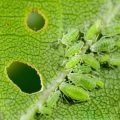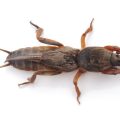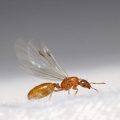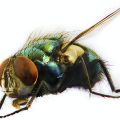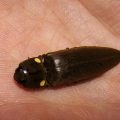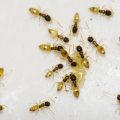Moths are fascinating creatures that belong to the Lepidoptera order of insects, which also includes butterflies. While they may be harmless and even beautiful to observe, many people wonder if moths pose any danger to humans or our homes. In this article, we will explore whether moths are dangerous and what precautions you can take to minimize any potential risks.
First and foremost, it’s important to note that moths themselves are not known to spread any diseases, parasites, or pathogens that can harm humans. So if you accidentally ingest a moth or come into contact with one, there is no need to panic. They are not poisonous to touch, although their spines can cause mild skin irritations, such as itching if they prick you.
One particular type of moth that may concern homeowners is the pantry moth, also known as the Indian meal moth. These pests are attracted to stored food products, such as grains, cereals, pet food, and dried fruits. While pantry moths themselves are not harmful, their larvae, eggs, and webbing can contaminate food and cause spoilage. Consuming food that has been infested with pantry moth larvae or their byproducts is generally considered safe but not particularly appetizing.
To prevent pantry moths from infesting your food supplies, it’s essential to maintain good hygiene and storage practices. Here are some tips to help you keep these pests at bay:
1. Check for infestations: Regularly inspect your pantry and food storage areas for signs of pantry moth activity. Look out for larvae, cocoons, webbing, or small holes in food packaging.
2. Store food properly: Transfer grains, cereals, and other susceptible items into airtight containers made of glass, metal, or sturdy plastic. This will prevent moths from accessing and laying eggs in your food.
3. Practice first-in, first out: Rotate your food supplies by using older items before newer ones. This helps ensure that food doesn’t sit for extended periods, reducing the risk of infestation.
4. Clean regularly: Keep your pantry clean and free from crumbs and food debris that may attract moths. Wipe down shelves and vacuum any potential hiding spots.
5. Freeze or heat-treat infested items: If you discover an infestation, you can salvage unaffected food items by freezing them for at least four days or heating them in the oven at 140°F (60°C) for 30 minutes.
It’s worth noting that moths found inside your home may also serve as symbols with various meanings. Some believe that seeing moths inside the house represents potential enemies trying to harm you or undermine your position in life. Additionally, it could indicate conflicts or disagreements between you and your partner, possibly leading to a separation.
While moths themselves are not dangerous to humans, certain species like pantry moths can cause problems by contaminating and spoiling food. By practicing good hygiene and storage habits, you can effectively minimize the risk of pantry moth infestations and protect your food supplies.
Are Moths Dangerous in House?
Moths, while not typically considered dangerous household pests, can still cause some issues if they infest your home. Here are a few points to consider:
1. Damage to fabrics: Certain species of moths, such as clothes moths, feed on natural fibers like wool, silk, and fur. They lay their eggs on these materials, and when the larvae hatch, they start munching on the fibers. This can result in significant damage to clothing, carpets, upholstery, and other textiles.
2. Food contamination: Pantry moths, also known as Indian meal moths, are attracted to stored food products like grains, cereals, and pet food. If you have an infestation, they can contaminate your food by leaving behind eggs, larvae, or webs. Consuming infested food can lead to health issues or the need to discard contaminated items.
3. Potential allergies: Some people may experience allergic reactions to moth scales or their droppings. These symptoms can include itching, sneezing, coughing, and skin irritation. While not everyone is affected, those with existing respiratory conditions or allergies may be more susceptible.
4. Fire hazard: Moths are attracted to light sources, and if they get too close to open flames (such as candles or lamps), their wings can catch fire, potentially leading to a household fire. This risk is relatively low but still worth considering.
To prevent or address moth infestations, you can take the following measures:
– Regularly clean and vacuum your home, paying particular attention to areas where moths may lay eggs or hide, such as closets, storage spaces, and pantry shelves.
– Store clothing and textiles properly, using airtight containers or moth repellents like cedar or lavender sachets.
– Inspect and properly seal any cracks or openings that moths could use to enter your home.
– Keep food storage areas clean and store food products in tightly sealed containers.
– If you notice a moth infestation, consider using pheromone traps or contacting a pest control professional for assistance.
Remember, while moths may not pose a significant danger to humans, they can still cause damage and inconvenience if left unchecked. Regular monitoring and preventive measures can help keep your home moth-free.

Can Moths Make You Sick?
Moths themselves are not known to make you sick. However, certain species of moths, such as pantry moths or Indian meal moths, can infest food products in your pantry, leading to potential health concerns. The larvae of these moths are the real culprits when it comes to causing issues.
Here’s a breakdown of the potential risks associated with pantry moths:
1. Ingesting larvae: Accidentally consuming pantry moth larvae, which are tiny caterpillar-like creatures, is generally not harmful. While it may be unpleasant to eat them, they are not known to cause any specific illnesses or adverse health effects.
2. Ingesting eggs: Similarly, ingesting pantry moth eggs is unlikely to cause any illness. The eggs are usually too small to be noticed and are often present in infested food products. However, they are not known to pose a significant health risk.
3. Ingesting webbing: Pantry moth larvae create silken webs or cocoons as they feed and grow. Ingesting this webbing is also not known to cause any health problems, as it is primarily composed of silk proteins.
It’s important to note that while pantry moth larvae, eggs, and webbing may not make you sick, they can contaminate your food and make it unfit for consumption. Ingesting infected food may lead to gastrointestinal discomfort, such as nausea, vomiting, or diarrhea, due to the presence of foreign matter or spoilage.
To prevent any potential health issues related to pantry moths, it is advisable to:
– Regularly inspect your pantry for signs of infestation, such as larvae, webbing, or pupae.
– Dispose of any infested food items promptly, ensuring proper sealing or containment to prevent further spread.
– Clean and vacuum your pantry thoroughly to eliminate any remaining larvae, eggs, or webbing.
– Store food products in airtight containers to prevent future infestations.
– Rotate your pantry stock, using older items before newer ones, to minimize the chances of infestation.
By taking these preventive measures and promptly addressing any signs of pantry moth infestation, you can ensure the safety and quality of your food, reducing the risk of potential health concerns.
Are Moths Toxic to Touch?
Moths, including their larvae, are generally not toxic to touch. However, it is important to exercise caution when coming into contact with them. While they may not be poisonous, their spines can cause mild skin irritations and itching if they prick you. Therefore, it is advisable to avoid touching or handling moths to minimize the risk of any discomfort. Here are some key points to consider:
– Moths and their larvae are not aggressive and generally do not pose a threat to humans.
– While they are not poisonous, their spines can cause mild skin irritations if they prick you.
– It is best to keep a safe distance and avoid touching or handling moths to prevent any potential skin discomfort.
– If you do come into contact with a moth and experience itching or irritation, washing the affected area with mild soap and water can help alleviate the symptoms.
– It is always a good idea to seek medical advice if you have any concerns or experience severe reactions after coming into contact with moths or their larvae.
By being mindful and avoiding direct contact with moths, you can minimize the risk of any negative effects on your skin.
What Do Moths in the House Mean?
Moths in the house can carry various symbolic meanings. Here are some interpretations that people often associate with the presence of moths in their homes:
1. Symbol of enemies: Moths in the house can represent the presence of enemies or individuals who may be trying to harm you. These enemies could be individuals who seek to undermine your position or disrupt your life in some way.
2. Sign of potential injury: The presence of moths in your house may also be seen as a warning sign of potential harm or injury. This could imply that you need to be cautious and take necessary precautions to avoid any accidents or physical harm.
3. Representation of hidden conflicts: Moths may symbolize hidden conflicts or unresolved issues in your life. The presence of moths in your house could be an indication that there are underlying tensions or disagreements that need to be addressed.
4. Relationship troubles: Moths in the house can also be interpreted as a sign of trouble in your romantic relationship. It could suggest that you and your partner are experiencing disagreements or conflicts that may lead to a possible separation or distance between you.
5. Spiritual symbolism: In some spiritual beliefs, moths are seen as messengers or symbols of transformation. The presence of moths in your house might indicate that a spiritual transformation or change is occurring in your life.
It’s important to remember that these interpretations are based on symbolism and personal beliefs. The presence of moths in your house may have different meanings depending on your cultural background or individual experiences.
Conclusion
Moths are generally not dangerous household pests. While they may be annoying and unsightly, they do not pose a significant threat to humans. Pantry moths, Indian meal moths, and other common household moths are not known to spread diseases, parasites, or pathogens. Therefore, if you accidentally ingest them, there is no need to panic as they will not make you sick.
Moths and their larvae are not aggressive creatures, and their presence in your home is typically a result of food sources or favorable conditions. To prevent infestations, it is important to keep your home clean and store food properly to minimize their attraction.
While moths are generally harmless, it is important to avoid touching or handling them. Their spines can cause itching and mild skin irritations. Additionally, the presence of moths in your house may symbolize potential enemies or conflicts in your life, so it is always a good idea to address any underlying issues or tensions that may exist.
Moths may be a nuisance, but they are not dangerous to humans. By taking preventive measures and addressing any underlying issues, you can effectively manage their presence and ensure a peaceful and pest-free home.




